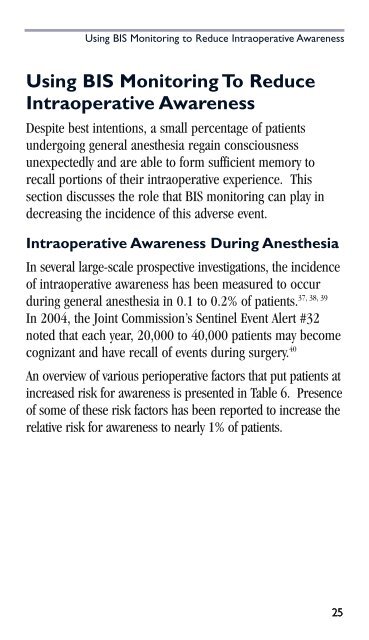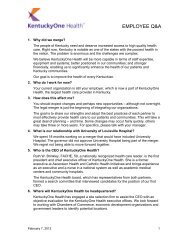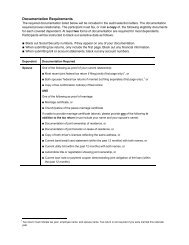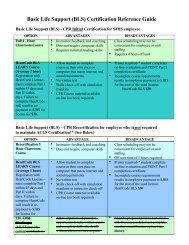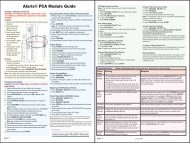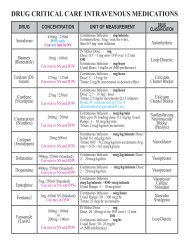BIS guide for clinicians
BIS guide for clinicians
BIS guide for clinicians
Create successful ePaper yourself
Turn your PDF publications into a flip-book with our unique Google optimized e-Paper software.
Using <strong>BIS</strong> Monitoring to Reduce Intraoperative Awareness<br />
Using <strong>BIS</strong> Monitoring To Reduce<br />
Intraoperative Awareness<br />
Despite best intentions, a small percentage of patients<br />
undergoing general anesthesia regain consciousness<br />
unexpectedly and are able to <strong>for</strong>m sufficient memory to<br />
recall portions of their intraoperative experience. This<br />
section discusses the role that <strong>BIS</strong> monitoring can play in<br />
decreasing the incidence of this adverse event.<br />
Intraoperative Awareness During Anesthesia<br />
In several large-scale prospective investigations, the incidence<br />
of intraoperative awareness has been measured to occur<br />
37, 38, 39<br />
during general anesthesia in 0.1 to 0.2% of patients.<br />
In 2004, the Joint Commission’s Sentinel Event Alert #32<br />
noted that each year, 20,000 to 40,000 patients may become<br />
cognizant and have recall of events during surgery. 40<br />
An overview of various perioperative factors that put patients at<br />
increased risk <strong>for</strong> awareness is presented in Table 6. Presence<br />
of some of these risk factors has been reported to increase the<br />
relative risk <strong>for</strong> awareness to nearly 1% of patients.<br />
25


